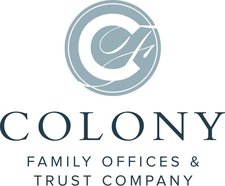Retirement Plans for Small Businesses
If you own a small business and you haven't set up a retirement savings plan, what are you waiting for? A retirement plan can help you and your employees save on taxes while saving for the future.
Tax advantages
A retirement plan can have significant tax advantages:
- Employers with 100 or fewer employees are eligible for a tax credit of up to $5,000 per year for the first three years for establishing a new retirement plan and up to $1,000 per eligible employee for the first five years for making employer contributions on behalf of employees who earn no more than $100,000. In order to qualify, the employer must have 100 or fewer workers earning at least $5,000 in compensation, including at least one non-highly compensated employee, and must not have maintained another retirement plan for the same group of employees during the previous three years.
- Employers are eligible for a tax credit of $500 for adding an auto-enrollment feature to their plans.
- On an ongoing basis, a portion of the amount you contribute to employee accounts is generally tax deductible (you may not take both deductions and credits for contributions in the same tax year).
- Contributions and earnings in traditional accounts grow on a tax-deferred basis. In Roth accounts, only earnings grow on a tax-deferred basis, but qualified withdrawals are tax-free. 1
Types of plans
Retirement plans are typically IRA-based (SEP and SIMPLE IRAs) or qualified [profit-sharing plans, 401(k) plans, and defined benefit plans]. In general, qualified plans are typically more complicated and expensive to maintain because they must comply with specific IRS and Department of Labor laws and rules. Also, qualified plan assets must be held either in trust or by an insurance company. With IRA-based plans, your employees own (i.e., "vest" in) your contributions immediately. With qualified plans, you can generally require that your employees work a certain numbers of years before they vest.
Recent law changes have made it easier and less expensive for small businesses to offer some types of qualified plans.
Simplified Employee Pension (SEP)
A SEP allows you to set up an IRA for yourself and each of your eligible employees. You contribute a uniform percentage of pay for each employee, although you don't have to make contributions every year, offering you some flexibility when business conditions vary. For 2025, your contributions for each employee are limited to the lesser of 25% of pay or $70,000. Most employers, including those who are self-employed, can establish a SEP. You may permit your employees to designate contributions as Roth contributions.
The plan must cover any employee aged 21 or older who has worked for you for three of the last five years and who earns at least $750.
SIMPLE IRAs
The SIMPLE IRA plan is available if you have 100 or fewer employees. Employees can elect to make pre-tax and/or Roth contributions in 2025 of up to $16,500; $20,000 if age 50 or older; and $21,750 if age 60, 61, 62, or 63 is reached by the end of the year. You must either match your employees' contributions dollar for dollar — up to 3% of each employee's compensation — or make a fixed contribution of 2% for each eligible employee, regardless of whether they contribute. (The 3% match can be reduced to 1% in any two of five years.)
Employers may make additional non-elective contributions to all employees of up to 10% of compensation or $5,000, whichever is less. Moreover, employers with no more than 25 employees may allow their employees to contribute up to $17,600; $21,450 if age 50 or older; and $22,850 if age 60, 61, 62, or 63 is reached by the end of the year. Employers with 26 to 100 employees may allow these higher limits as long as they provide either a 4% match or a 3% nonelective contribution.
Each employee who earned $5,000 or more in any two prior years, and who is expected to earn at least $5,000 in the current year, must be allowed to participate in the plan.
Profit-sharing plan
Typically, only you, not your employees, contribute to a qualified profit-sharing plan. Your contributions are discretionary — there's usually no required amount each year, and you have the flexibility to contribute nothing at all in a given year (although your contributions must be nondiscriminatory, and "substantial and recurring," for your plan to remain qualified).
The plan must contain a formula for determining how your contributions are allocated among employees. A separate account is established for each participant. Generally, each employee with a year of service is eligible to participate (although you can require two years of service if your contributions are immediately vested). Contributions for any employee in 2025 can't exceed the lesser of $70,000 or 100% of the employee's compensation.
401(k) plan
With a 401(k) plan (technically, a qualified profit-sharing plan with a cash or deferred feature), employees can make pre-tax and/or Roth contributions in 2025 of up to $23,500; $31,000 if age 50 or older; and $34,750 if age 60, 61, 62, or 63 is reached by the end of the year. Generally, each employee with a year of service must be allowed to contribute to the plan.
You can also make employer matching and/or profit-sharing contributions. Combined, employer and employee contributions for any employee in 2025 can't exceed the lesser of $70,000, plus catch-up contributions, or 100% of the employee's compensation. In general, each employee with a year of service is eligible to receive employer contributions, but you can require two years of service if your contributions are immediately vested.
401(k) plans are required to perform somewhat complicated testing each year to make sure benefits aren't disproportionately weighted toward higher-paid employees. However, you may avoid discrimination testing if you adopt a "safe harbor" 401(k) plan. With a safe harbor 401(k) plan, you're generally required to either match your employees' contributions (100% of employee deferrals up to 3% of compensation, and 50% of deferrals between 3% and 5% of compensation), or make a fixed contribution of 3% of compensation for all eligible employees, regardless of whether they contribute to the plan. Those contributions must be fully vested.
You may also avoid discrimination testing by adopting a SIMPLE 401(k) plan. SIMPLE 401(k) plans are similar to SIMPLE IRAs in terms of contribution limits and eligibility requirements, but may also allow loans and hardship withdrawals. Because they're qualified plans, they're a bit more complicated to administer than SIMPLE IRAs.
In addition, employers with no other retirement plan (with limited exceptions) can adopt what's known as a starter 401(k) plan. Designed to be low cost and easy to administer, starter 401(k) plans allow only employee contributions. Employees must be auto-enrolled at a minimum contribution rate of 3% (not to exceed 15%) and may contribute up to $6,000 in 2025 ($7,000 for employees age 50 or older).
Defined benefit plan
A defined benefit plan guarantees your employees a specified level of benefits at retirement (for example, an annual benefit equal to 30% of final average pay). In 2025, a defined benefit plan can provide an annual benefit of up to $280,000 (or 100% of pay if less). An actuary is generally needed to determine the annual contributions you must make to fund the promised benefit. Contributions may vary each year based on the performance of plan investments and other factors.
In general, defined benefit plans are too costly and complex for most small businesses. However, because they can provide the largest benefit of any retirement plan, and therefore allow the largest deductible employer contribution, defined benefit plans can be attractive to businesses with a small group of highly compensated owners who are seeking to contribute as much money as possible on a tax-deferred basis.




